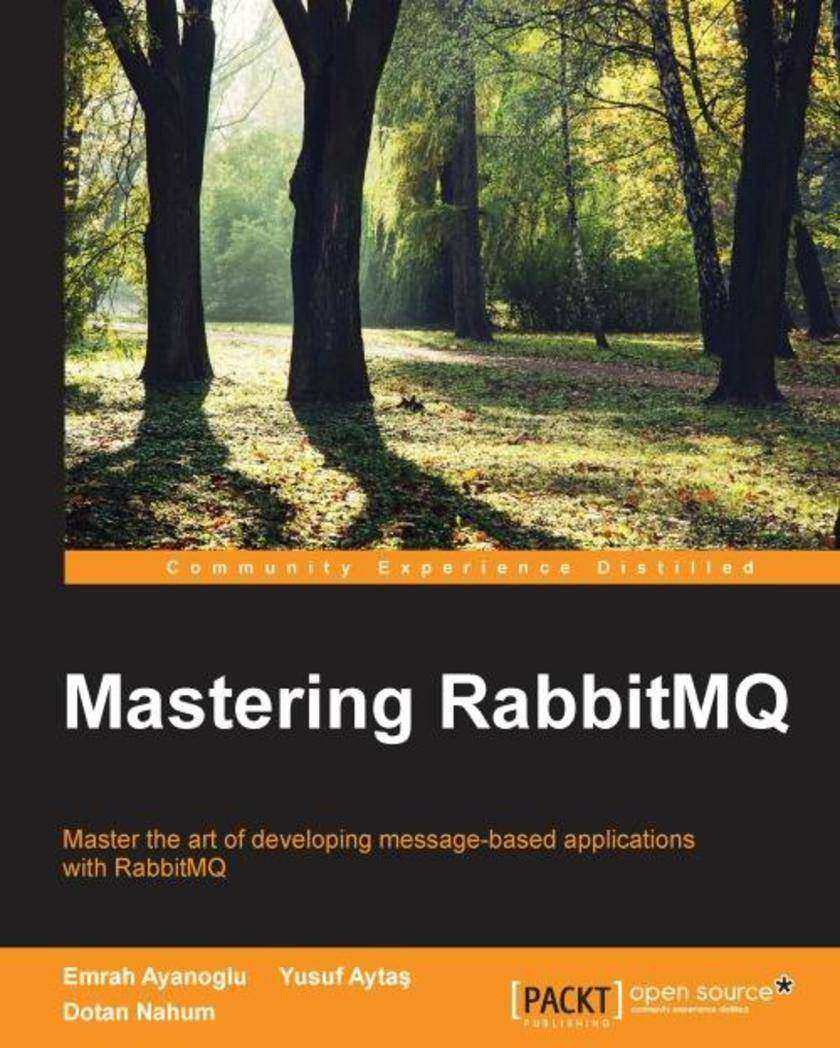
Mastering RabbitMQ
¥99.18
Master the art of developing message-based applications with RabbitMQAbout This BookLearn how to administer, manage, and extend your own message broker, RabbitMQDevelop clients to make a message bridge between your software systems using RabbitMQDiscover how to achieve proficiency with RabbitMQ with the well-defined de*ions of the topicsWho This Book Is ForIf you are an intermediate-level RabbitMQ developer, who wants to achieve professional-level expertise in the subject, this book is for you. You’ll also need to have a decent understanding of message queuing.What You Will LearnAdminister RabbitMQ using different toolsUnderstand the roots and details of messaging, message brokers, and AMQP protocolScale the RabbitMQ server using the clusters and high availability techniquesExtend RabbitMQ by developing the Erlang OTP-based applications that use the RabbitMQ APIManage the RabbitMQ server using its powerful toolsMonitor the RabbitMQ Server using different open source tools such as Nagios, Munin, and ZabbixEnsure your RabbitMQ’s security using SSL, SASL, and access controlDevelop RabbitMQ clients using Java, Python, and C# with an industry exampleIn DetailRabbitMQ is one of the most powerful Open Source message broker software, which is widely used in tech companies such as Mozilla, VMware, Google, AT&T, and so on. RabbitMQ gives you lots of fantastic and easy-to-manage functionalities to control and manage the messaging facility with lots of community support. As scalability is one of our major modern problems, messaging with RabbitMQ is the main part of the solution to this problem.This book explains and demonstrates the RabbitMQ server in a detailed way. It provides you with lots of real-world examples and advanced solutions to tackle the scalability issues.You’ll begin your journey with the installation and configuration of the RabbitMQ server, while also being given specific details pertaining to the subject. Next, you’ll study the major problems that our server faces, including scalability and high availability, and try to get the solutions for both of these issues by using the RabbitMQ mechanisms. Following on from this, you’ll get to design and develop your own plugins using the Erlang language and RabbitMQ’s internal API. This knowledge will help you to start with the management and monitoring of the messages, tools, and applications. You’ll also gain an understanding of the security and integrity of the messaging facilities that RabbitMQ provides. In the last few chapters, you will build and keep track of your clients (senders and receivers) using Java, Python, and C#.Style and approach An easy-to-follow guide, full of hands-on examples based around managing, monitoring, extending, and securing RabbitMQ and its internal tools. You will learn how to develop your own clients using Java, Python, and C#.
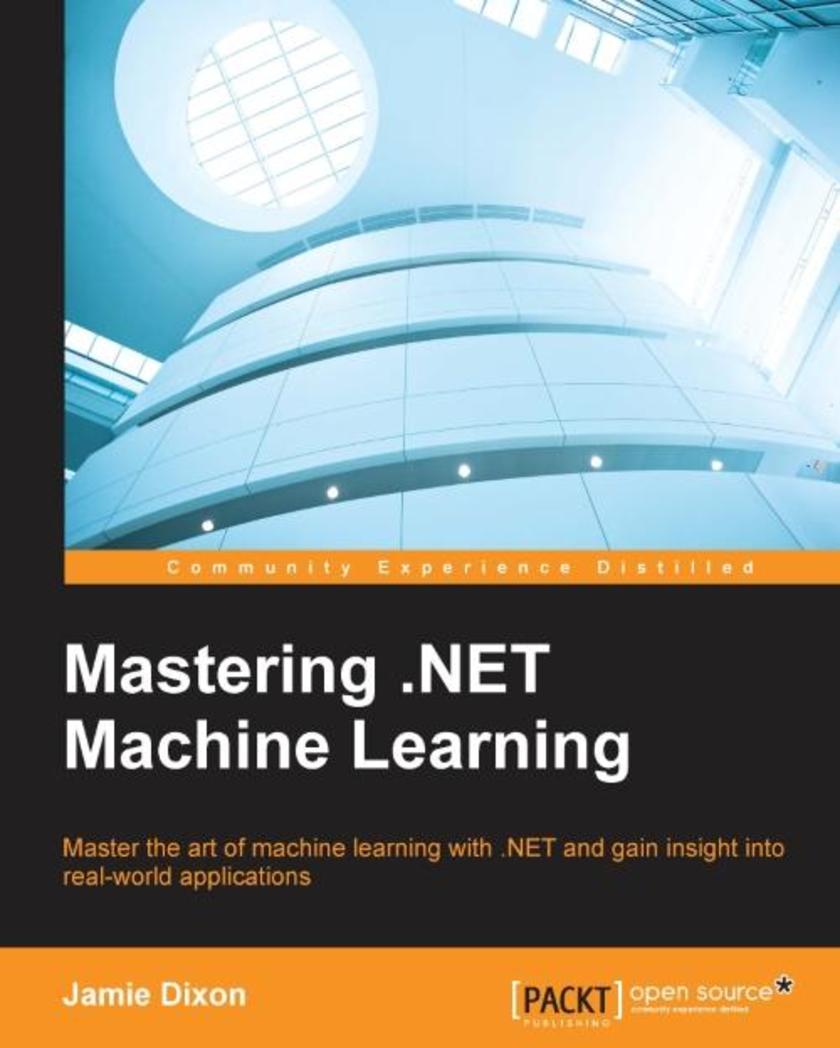
Mastering .NET Machine Learning
¥99.18
Master the art of machine learning with .NET and gain insight into real-world applications About This Book Based on .NET framework 4.6.1, includes examples on ASP.NET Core 1.0 Set up your business application to start using machine learning techniques Familiarize the user with some of the more common .NET libraries for machine learning Implement several common machine learning techniques Evaluate, optimize and adjust machine learning models Who This Book Is For This book is targeted at .Net developers who want to build complex machine learning systems. Some basic understanding of data science is required. What You Will Learn Write your own machine learning applications and experiments using the latest .NET framework, including .NET Core 1.0 Set up your business application to start using machine learning. Accurately predict the future using regressions. Discover hidden patterns using decision trees. Acquire, prepare, and combine datasets to drive insights. Optimize business throughput using Bayes Classifier. Discover (more) hidden patterns using KNN and Na?ve Bayes. Discover (even more) hidden patterns using K-Means and PCA. Use Neural Networks to improve business decision making while using the latest ASP.NET technologies. Explore “Big Data”, distributed computing, and how to deploy machine learning models to IoT devices – making machines self-learning and adapting Along the way, learn about Open Data, Bing maps, and MBrace In Detail .Net is one of the widely used platforms for developing applications. With the meteoric rise of Machine learning, developers are now keen on finding out how can they make their .Net applications smarter. Also, .NET developers are interested into moving into the world of devices and how to apply machine learning techniques to, well, machines. This book is packed with real-world examples to easily use machine learning techniques in your business applications. You will begin with introduction to F# and prepare yourselves for machine learning using .NET framework. You will be writing a simple linear regression model using an example which predicts sales of a product. Forming a base with the regression model, you will start using machine learning libraries available in .NET framework such as Math.NET, Numl.NET and Accord.NET with the help of a sample application. You will then move on to writing multiple linear regressions and logistic regressions. You will learn what is open data and the awesomeness of type providers. Next, you are going to address some of the issues that we have been glossing over so far and take a deep dive into obtaining, cleaning, and organizing our data. You will compare the utility of building a KNN and Naive Bayes model to achieve best possible results. Implementation of Kmeans and PCA using Accord.NET and Numl.NET libraries is covered with the help of an example application. We will then look at many of issues confronting creating real-world machine learning models like overfitting and how to combat them using confusion matrixes, scaling, normalization, and feature selection. You will now enter into the world of Neural Networks and move your line of business application to a hybrid scientific application. After you have covered all the above machine learning models, you will see how to deal with very large datasets using MBrace and how to deploy machine learning models to Internet of Thing (IoT) devices so that the machine can learn and adapt on the fly. Style and approach This book will guide you in learning everything about how to tackle the flood of data being encountered these days in your .NET applications with the help of popular machine learning libraries offered by the .NET framework.
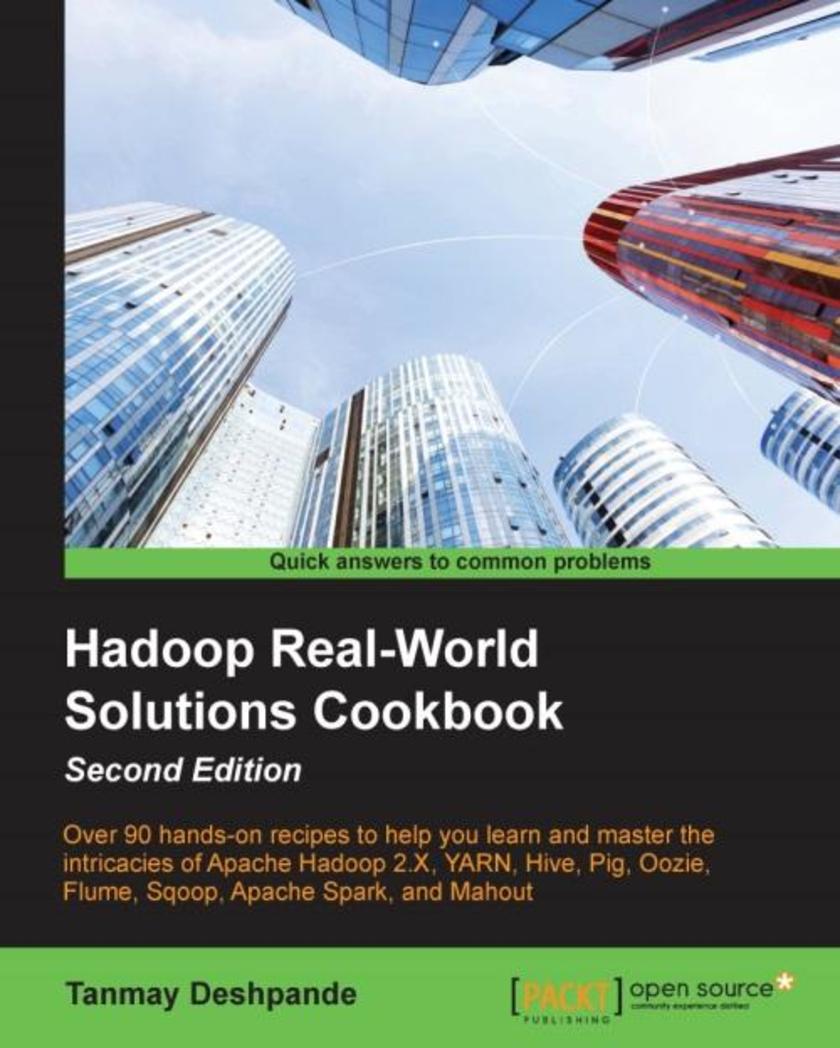
Hadoop Real-World Solutions Cookbook - Second Edition
¥99.18
Over 90 hands-on recipes to help you learn and master the intricacies of Apache Hadoop 2.X, YARN, Hive, Pig, Oozie, Flume, Sqoop, Apache Spark, and Mahout About This Book Implement outstanding Machine Learning use cases on your own analytics models and processes. Solutions to common problems when working with the Hadoop ecosystem. Step-by-step implementation of end-to-end big data use cases. Who This Book Is For Readers who have a basic knowledge of big data systems and want to advance their knowledge with hands-on recipes. What You Will Learn Installing and maintaining Hadoop 2.X cluster and its ecosystem. Write advanced Map Reduce programs and understand design patterns. Advanced Data Analysis using the Hive, Pig, and Map Reduce programs. Import and export data from various sources using Sqoop and Flume. Data storage in various file formats such as Text, Sequential, Parquet, ORC, and RC Files. Machine learning principles with libraries such as Mahout Batch and Stream data processing using Apache Spark In Detail Big data is the current requirement. Most organizations produce huge amount of data every day. With the arrival of Hadoop-like tools, it has become easier for everyone to solve big data problems with great efficiency and at minimal cost. Grasping Machine Learning techniques will help you greatly in building predictive models and using this data to make the right decisions for your organization. Hadoop Real World Solutions Cookbook gives readers insights into learning and mastering big data via recipes. The book not only clarifies most big data tools in the market but also provides best practices for using them. The book provides recipes that are based on the latest versions of Apache Hadoop 2.X, YARN, Hive, Pig, Sqoop, Flume, Apache Spark, Mahout and many more such ecosystem tools. This real-world-solution cookbook is packed with handy recipes you can apply to your own everyday issues. Each chapter provides in-depth recipes that can be referenced easily. This book provides detailed practices on the latest technologies such as YARN and Apache Spark. Readers will be able to consider themselves as big data experts on completion of this book. This guide is an invaluable tutorial if you are planning to implement a big data warehouse for your business. Style and approach An easy-to-follow guide that walks you through world of big data. Each tool in the Hadoop ecosystem is explained in detail and the recipes are placed in such a manner that readers can implement them sequentially. Plenty of reference links are provided for advanced reading.
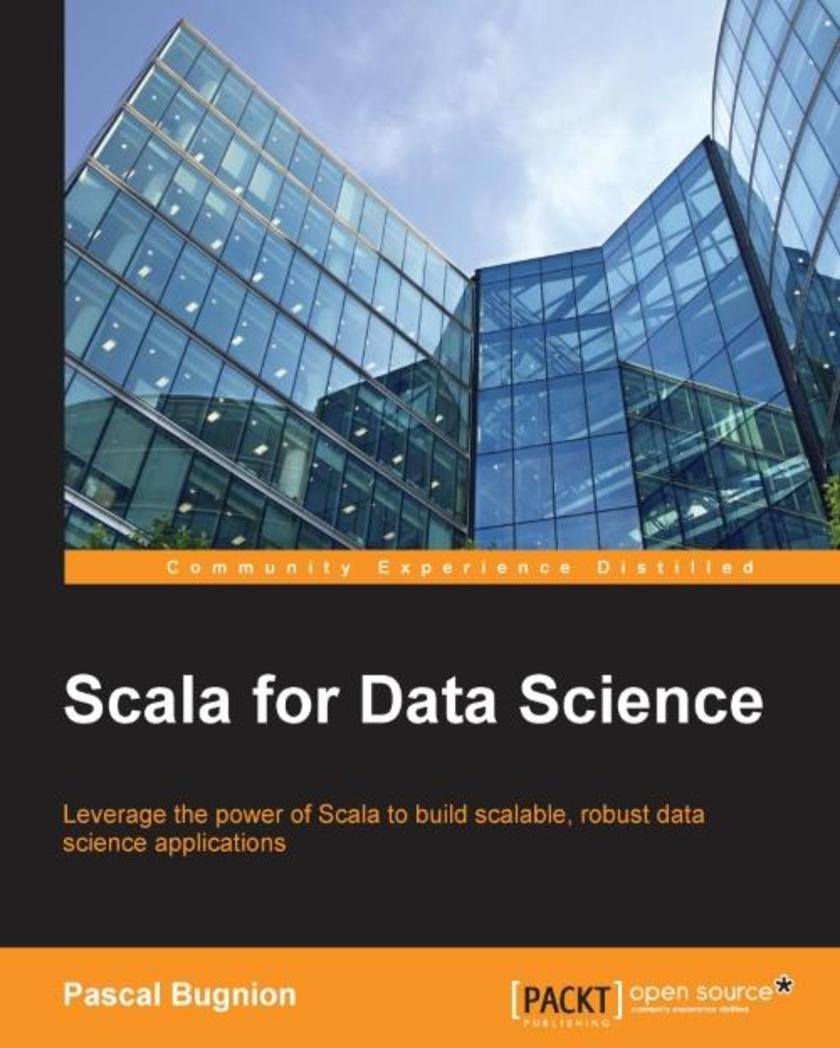
Scala for Data Science
¥99.18
Leverage the power of Scala with different tools to build scalable, robust data science applicationsAbout This BookA complete guide for scalable data science solutions, from data ingestion to data visualizationDeploy horizontally scalable data processing pipelines and take advantage of web frameworks to build engaging visualizationsBuild functional, type-safe routines to interact with relational and NoSQL databases with the help of tutorials and examples providedWho This Book Is ForIf you are a Scala developer or data scientist, or if you want to enter the field of data science, then this book will give you all the tools you need to implement data science solutions.What You Will LearnTransform and filter tabular data to extract features for machine learningImplement your own algorithms or take advantage of MLLib’s extensive suite of models to build distributed machine learning pipelinesRead, transform, and write data to both SQL and NoSQL databases in a functional mannerWrite robust routines to query web APIsRead data from web APIs such as the GitHub or Twitter APIUse Scala to interact with MongoDB, which offers high performance and helps to store large data sets with uncertain query requirementsCreate Scala web applications that couple with JavaScript libraries such as D3 to create compelling interactive visualizationsDeploy scalable parallel applications using Apache Spark, loading data from HDFS or HiveIn DetailScala is a multi-paradigm programming language (it supports both object-oriented and functional programming) and *ing language used to build applications for the JVM. Languages such as R, Python, Java, and so on are mostly used for data science. It is particularly good at analyzing large sets of data without any significant impact on performance and thus Scala is being adopted by many developers and data scientists. Data scientists might be aware that building applications that are truly scalable is hard. Scala, with its powerful functional libraries for interacting with databases and building scalable frameworks will give you the tools to construct robust data pipelines.This book will introduce you to the libraries for ingesting, storing, manipulating, processing, and visualizing data in Scala.Packed with real-world examples and interesting data sets, this book will teach you to ingest data from flat files and web APIs and store it in a SQL or NoSQL database. It will show you how to design scalable architectures to process and modelling your data, starting from simple concurrency constructs such as parallel collections and futures, through to actor systems and Apache Spark. As well as Scala’s emphasis on functional structures and immutability, you will learn how to use the right parallel construct for the job at hand, minimizing development time without compromising scalability. Finally, you will learn how to build beautiful interactive visualizations using web frameworks.This book gives tutorials on some of the most common Scala libraries for data science, allowing you to quickly get up to speed with building data science and data engineering solutions.Style and approachA tutorial with complete examples, this book will give you the tools to start building useful data engineering and data science solutions straightaway
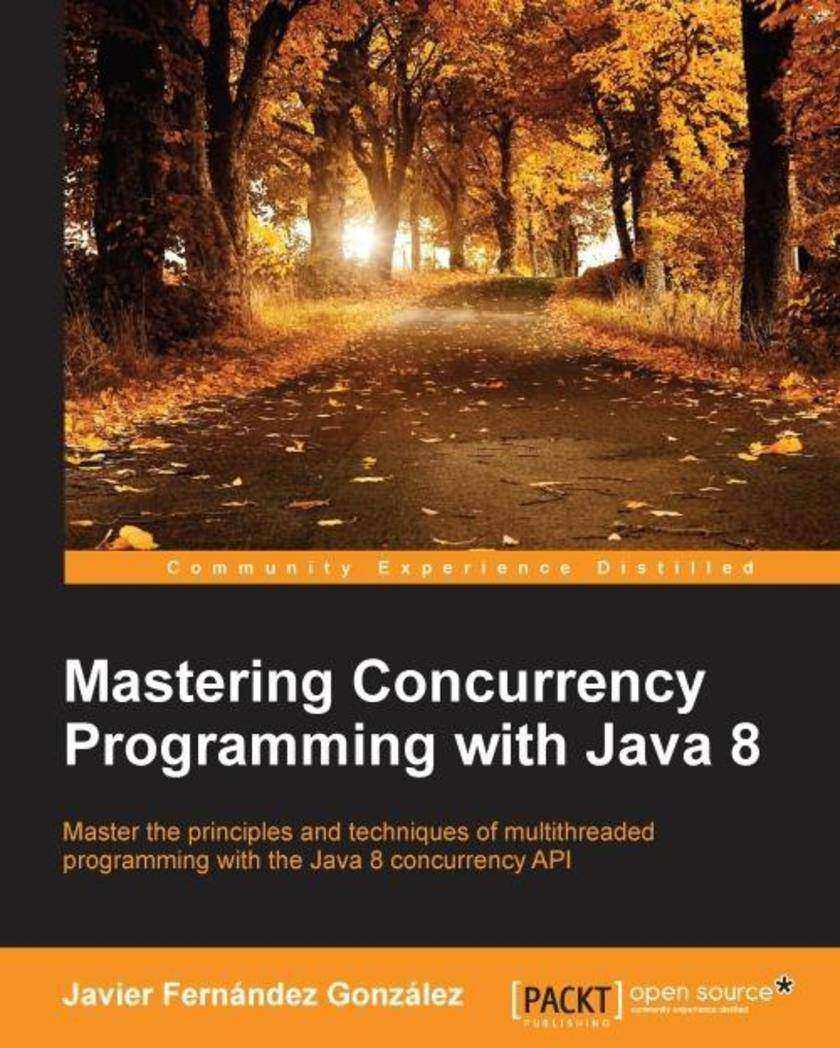
Mastering Concurrency Programming with Java 8
¥99.18
Master the principles and techniques of multithreaded programming with the Java 8 Concurrency APIAbout This BookImplement concurrent applications using the Java 8 Concurrency API and its new componentsImprove the performance of your applications or process more data at the same time, taking advantage of all of your resources.Construct real-world examples related to machine learning, data mining, image processing, and client/server environmentsWho This Book Is ForIf you are a competent Java developer with a good understanding of concurrency but have no knowledge of how to effectively implement concurrent programs or use streams to make processes more efficient, then this book is for you.What You Will LearnDesign concurrent applications by converting a sequential algorithm into a concurrent oneDiscover how to avoid all the possible problems you can get in concurrent algorithmsUse the Executor framework to manage concurrent tasks without creating threadsExtend and modify Executors to adapt their behavior to your needsSolve problems using the divide and conquer technique and the Fork/Join frameworkProcess massive data sets with parallel streams and Map/Reduce implementationControl data-race conditions using concurrent data structures and synchronization mechanismsTest and monitor concurrent applicationsIn DetailConcurrency programming allows several large tasks to be divided into smaller sub-tasks, which are further processed as individual tasks that run in parallel. All the sub-tasks are combined together once the required results are achieved; they are then merged to get the final output. The whole process is very complex. This process goes from the design of concurrent algorithms to the testing phase where concurrent applications need extra attention. Java includes a comprehensive API with a lot of ready-to-use components to implement powerful concurrency applications in an easy way, but with a high flexibility to adapt these components to your needs.The book starts with a full de*ion of design principles of concurrent applications and how to parallelize a sequential algorithm. We'll show you how to use all the components of the Java Concurrency API from basics to the most advanced techniques to implement them in powerful concurrency applications in Java.You will be using real-world examples of complex algorithms related to machine learning, data mining, natural language processing, image processing in client / server environments. Next, you will learn how to use the most important components of the Java 8 Concurrency API: the Executor framework to execute multiple tasks in your applications, the phaser class to implement concurrent tasks divided into phases, and the Fork/Join framework to implement concurrent tasks that can be split into smaller problems (using the divide and conquer technique). Toward the end, we will cover the new inclusions in Java 8 API, the Map and Reduce model, and the Map and Collect model. The book will also teach you about the data structures and synchronization utilities to avoid data-race conditions and other critical problems. Finally, the book ends with a detailed de*ion of the tools and techniques that you can use to test a Java concurrent application.Style and approach A complete guide implementing real-world examples with algorithms related to machine learning, data mining, and natural language processing in client/server environments. All the examples are explained in a step-by-step approach.
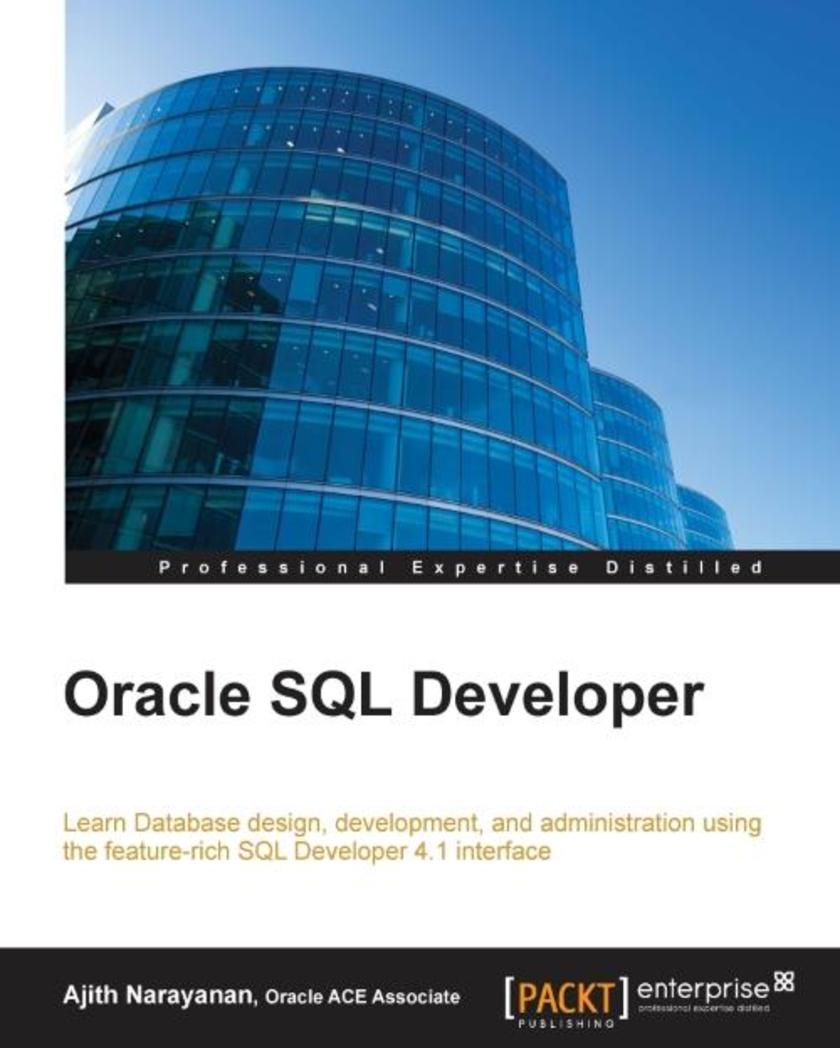
Oracle SQL Developer
¥99.18
Learn Database design, development,and administration using the feature-rich SQL Developer 4.1 interfaceAbout This BookExplore all the SQL Developer 4.1 features useful for Oracle database developers, architects, and administratorsUnderstand how this free tool from Oracle has evolved over the years and has become a complete tool that makes life easy for Oracle and third-party database usersThe author, Ajith Narayanan, has a total of 10+ years of work experience as an Oracle [APPS] DBAWho This Book Is ForThis book is intended for Oracle developers who are responsible for database management. You are expected to have programming knowledge of SQL and PL/SQL, and must be familiar with basic Oracle database concepts.What You Will LearnInstall and navigate through all the advanced features of SQL Developer that were introduced in version 4.1Browse, create, edit, and delete (drop) database objectsUse the SQL worksheet to run SQL statements and *s, edit and debug PL/SQL code, manipulate and export (unload) dataCarry out all DBA-related activities such as exporting/importing, tuning, and analyzing database performance issuesQuickly analyze, create, and edit the data model using data modelerExtend the SQL developer capabilities by exploring the APEX related pages, enabling and working with RESTful servicesUse the available reports and create new custom reports with custom *sGrasp how to connect to third-party databases and work smoothly with themIn DetailAt times, DBAs support 100s of databases at work. In such scenarios, using a command-line tool like putty adds to the difficulty, while SQL Developer makes the life of a developer, DBA, or DB architect easier by providing a graphical user interface equipped with features that can bolster and enhance the user experience and boost efficiency. Features such as DBA panel, Reports, Data Modeler, and Data Miner are just a few examples of its rich features, and its support for APEX, REST Services, timesten, and third-party database drivers demonstrate its extensibility.You may be a newbie to databases or a seasoned database expert, either way this book will help you understand the database structure and the different types of objects that organize enterprise data in an efficient manner. This book introduces the features of the SQL Developer 4.1 tool in an incremental fashion, starting with installing them, making the database connections, and using the different panels. By sequentially walking through the steps in each chapter, you will quickly master SQL Developer 4.1.Style and approachThis book follows a step-by-step approach and is in a conversational and easy-to-follow style. Screenshots , and detailed explanations of the basic and advanced features of SQL Developer 4.1 that will make your work and life easy.
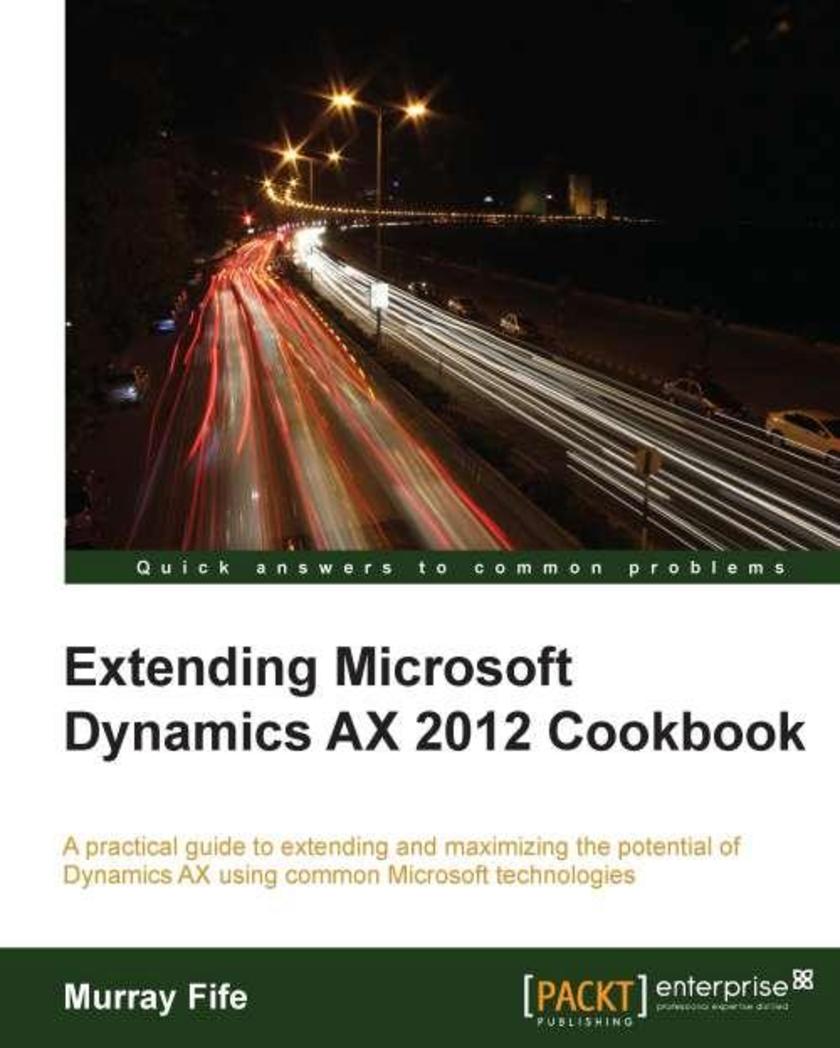
Extending Microsoft Dynamics AX 2012 Cookbook
¥99.18
Follow valuable and practical recipes touring the fundamental features of Dynamics AX extension.This title is for business professionals, such as administrators and consultants, who want to take full advantage of the features of Dynamics AX. This book has a wide appeal and you do not need to be a SharePoint, database or programming expert. As long as you know a little about these elements, you will be able to take full advantage of the business efficiency created with Dynamics AX extensions.
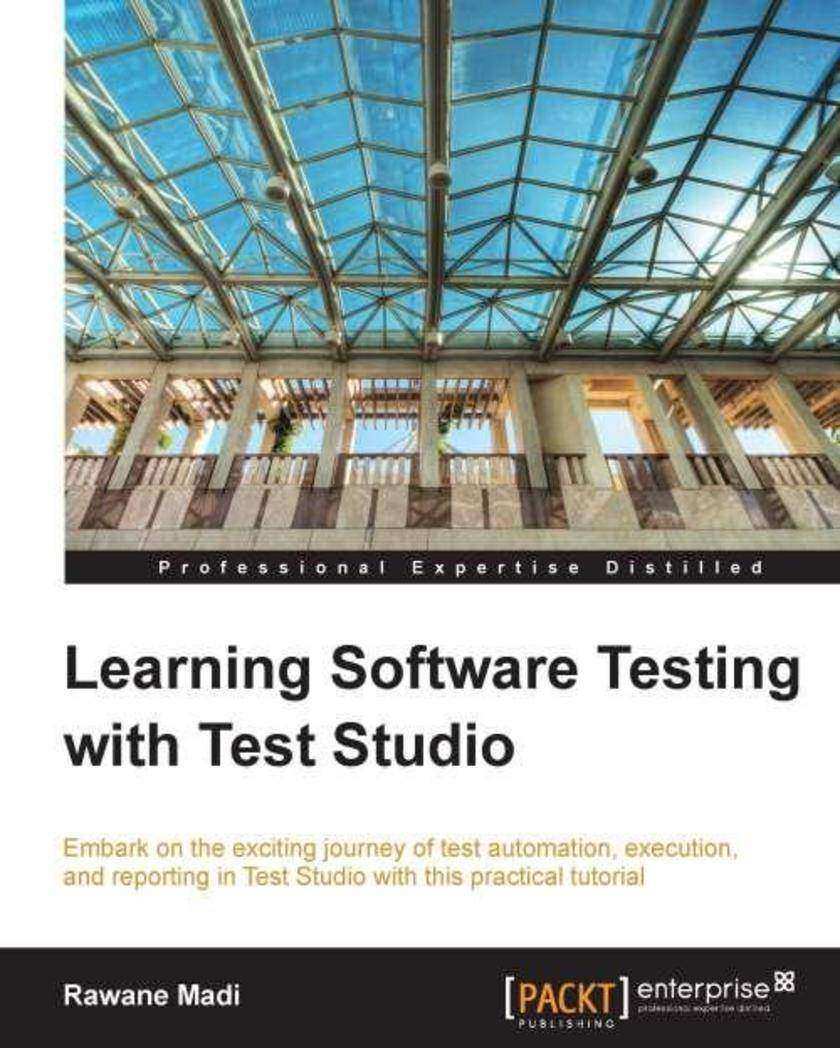
Learning Software Testing with Test Studio
¥99.18
Learning Software Testing with Test Studio is a practical, hands-on guide that will help you get started with Test Studio to design your automated solution and tests. All through the book, there are best practices and tips and tricks inside Test Studio which can be employed to improve your solution just like an experienced QA.If you are a beginner or a professional QA who is seeking a fast, clear, and direct to the point start in automated software testing inside Test Studio, this book is for you. You should be familiar with the .NET framework, mainly Visual Studio, C#, and SQL, as the book's examples rely on them. Prior testing knowledge will also be helpful.
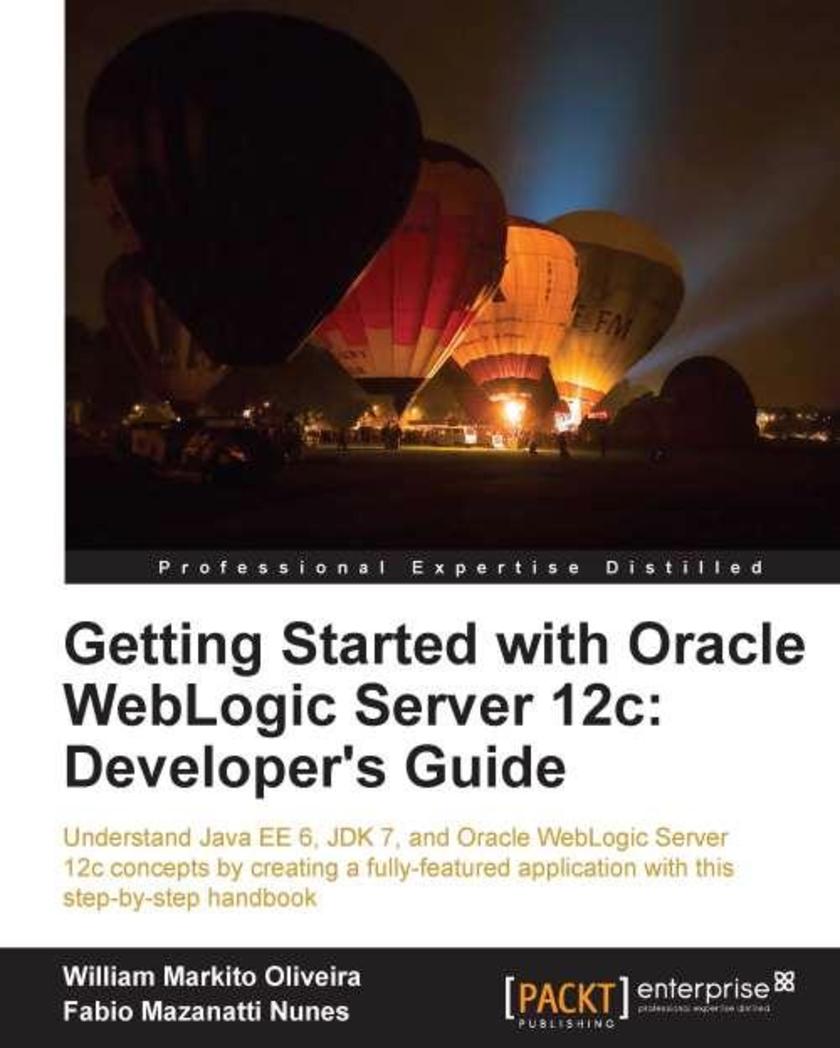
Getting Started with Oracle WebLogic Server 12c: Developer’s Guide
¥99.18
Getting Started with Oracle WebLogic Server 12c is a fast-paced and feature-packed book, designed to get you working with Java EE 6, JDK 7 and Oracle WebLogic Server 12c straight away, so start developing your own applications.Getting Started with Oracle WebLogic Server 12c: Developer's Guide is written for developers who are just getting started, or who have some experience, with Java EE who want to learn how to develop for and use Oracle WebLogic Server. Getting Started with Oracle WebLogic Server 12c: Developer's Guide also provides a great overview of the updated features of the 12c release, and how it integrates Java EE 6 and JDK 7 to remove boilerplate code.
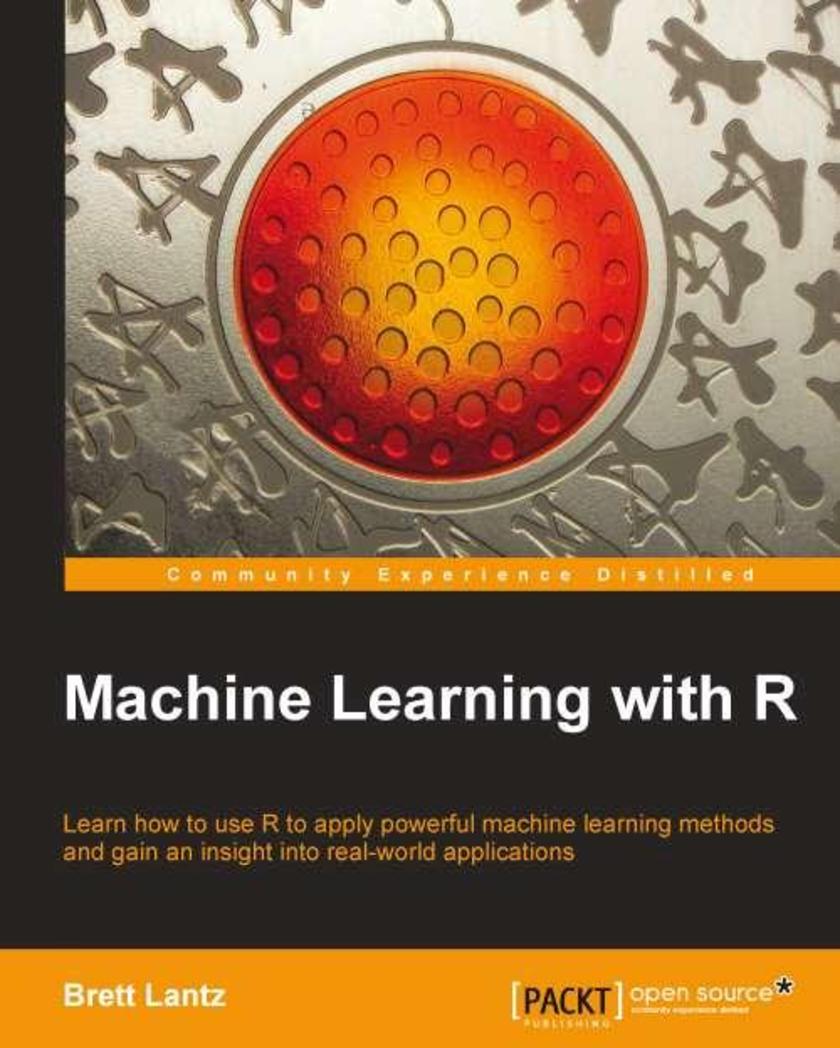
Machine Learning with R
¥99.18
Written as a tutorial to explore and understand the power of R for machine learning. This practical guide that covers all of the need to know topics in a very systematic way. For each machine learning approach, each step in the process is detailed, from preparing the data for analysis to evaluating the results. These steps will build the knowledge you need to apply them to your own data science tasks.Intended for those who want to learn how to use R's machine learning capabilities and gain insight from your data. Perhaps you already know a bit about machine learning, but have never used R; or perhaps you know a little R but are new to machine learning. In either case, this book will get you up and running quickly. It would be helpful to have a bit of familiarity with basic programming concepts, but no prior experience is required.
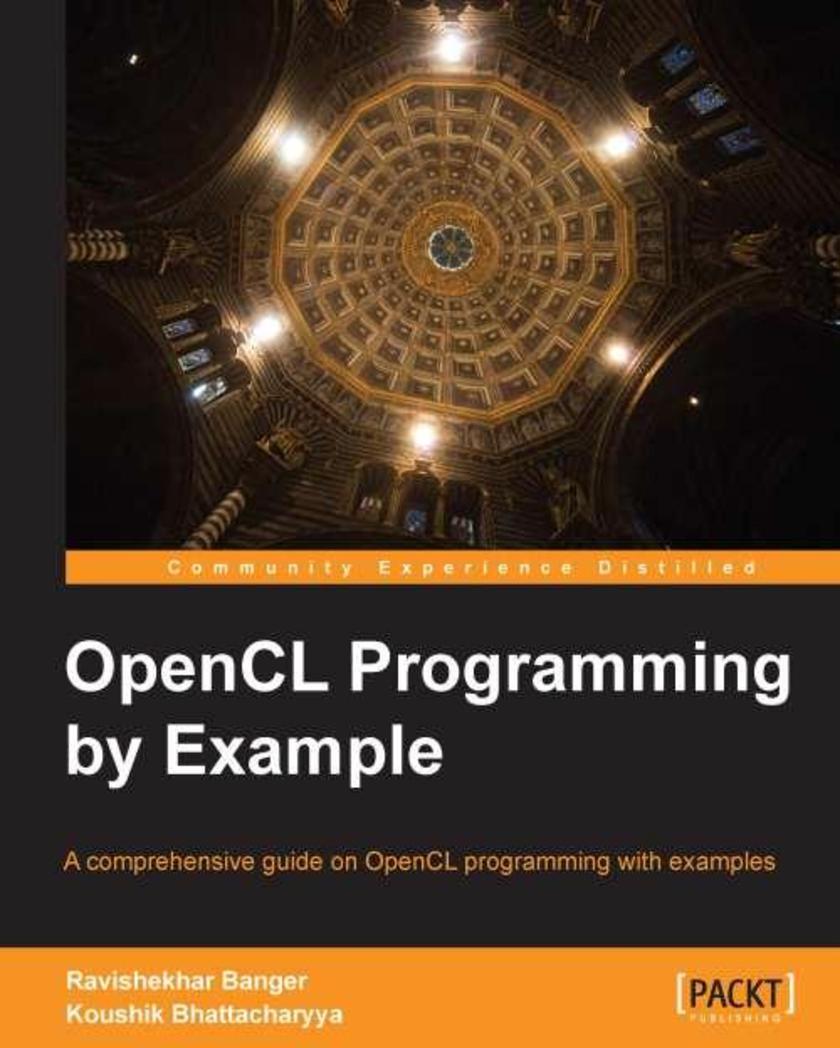
OpenCL Programming by Example
¥99.18
This book follows an example-driven, simplified, and practical approach to using OpenCL for general purpose GPU programming.If you are a beginner in parallel programming and would like to quickly accelerate your algorithms using OpenCL, this book is perfect for you! You will find the diverse topics and case studies in this book interesting and informative. You will only require a good knowledge of C programming for this book, and an understanding of parallel implementations will be useful, but not necessary.
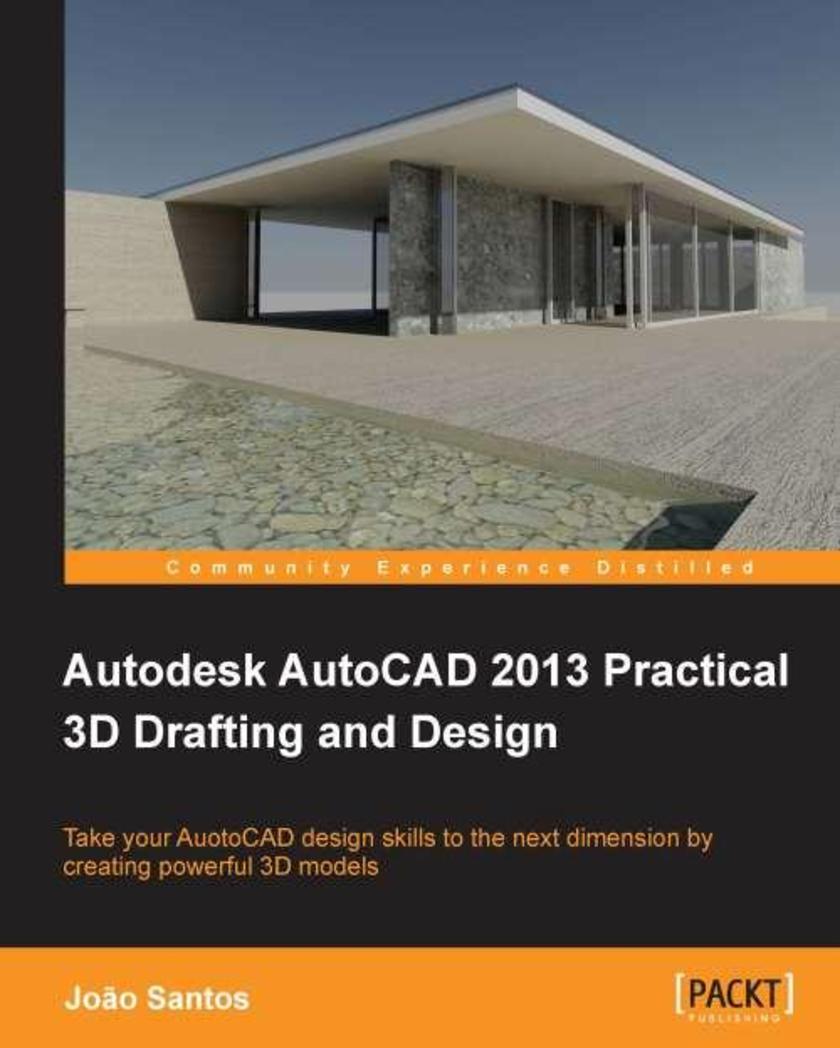
Autodesk AutoCAD 2013 Practical 3D Drafting and Design
¥99.18
This book is written in a practical and friendly style with practical tutorials, exercises, and detailed images which will help you master the third dimension. This book is intended for everyone who wants to create accurate 3D models in AutoCAD, like architecture, engineering, or design professionals, and students. Only basic understanding of 2D AutoCAD is needed.

Oracle 11g Anti-hacker's Cookbook
¥99.18
This cookbook has recipes written in simple, easy to understand format with lots of screenshots and insightful tips and hints. If you are an Oracle Database Administrator, Security Manager or Security Auditor looking to secure the Oracle Database or prevent it from being hacked, then this book is for you. This book assumes you have a basic understanding of security concepts.
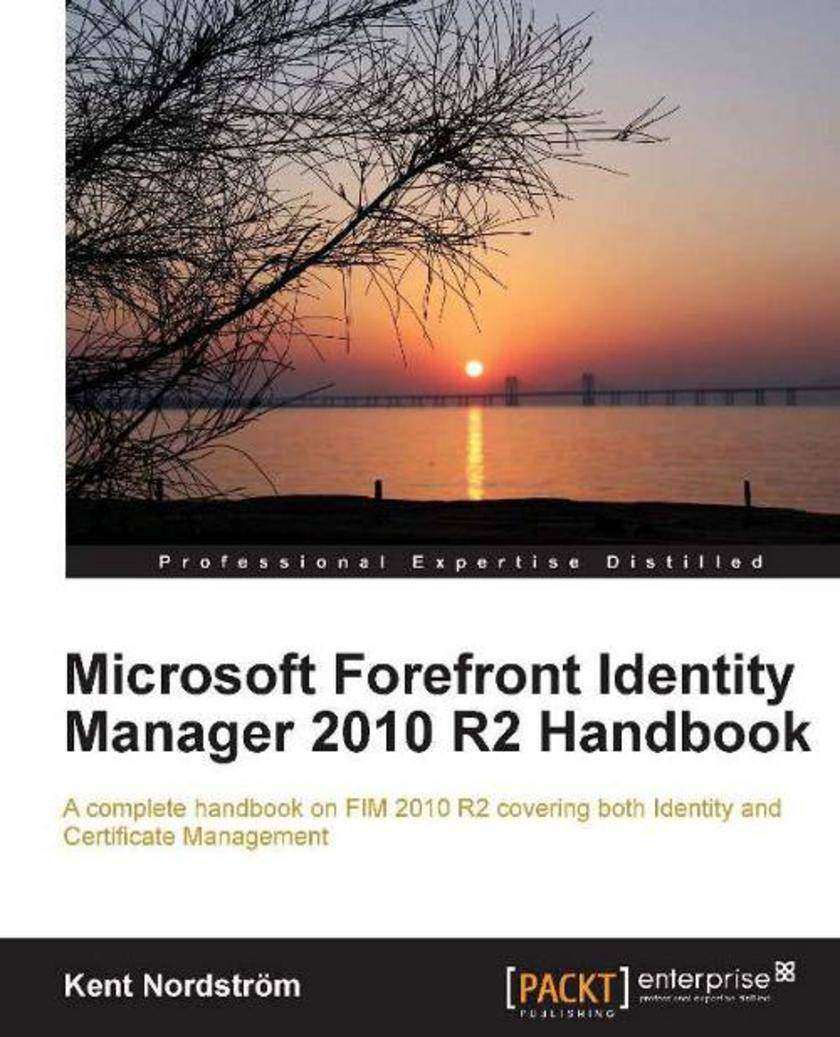
Microsoft Forefront Identity Manager 2010 R2 Handbook
¥99.18
Throughout the book, we will follow a fictional company, the case study will help you in implementing FIM 2010 R2. All the examples in the book will relate to this fictive company and you will be taken from design, to installation, to configuration of FIM 2010 R2. If you are implementing and managing FIM 2010 R2 in your business, then this book is for you. You will need to have a basic understanding of Microsoft based infrastructure using Active Directory. If you are new to Forefront Identity Management, the case-study approach of this book will help you to understand the concepts and implement them.
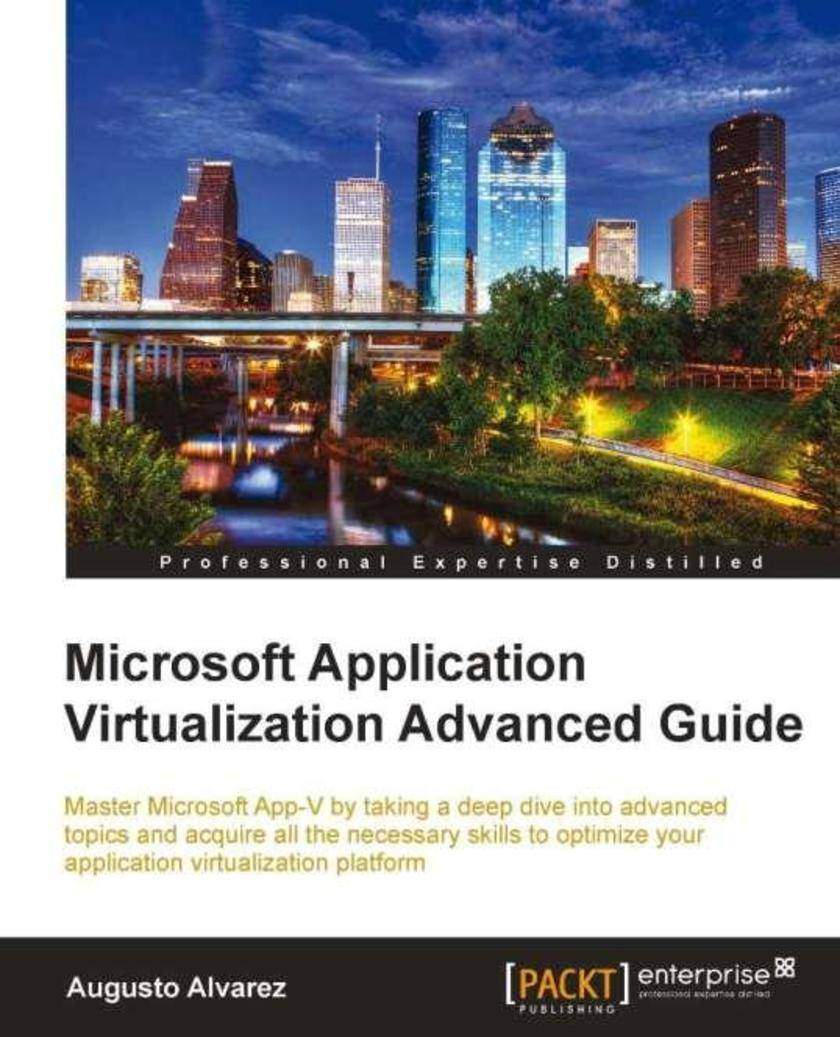
Microsoft Application Virtualization Advanced Guide
¥99.18
A practical tutorial containing clear, step-by-step explanations of all the concepts required to understand the technology involved in virtualizing your application infrastructure. Each chapter uses real-world scenarios so that the readers can put into practice what they learn immediately and with the right guidance. Each topic is written defining a common need and developing the process to solve it using Microsoft App-V. This book is for system administrators or consultants who want to master and dominate App-V, and gain a deeper understanding of the technology in order to optimize App V implementations. Even though the book does not include basic steps like installing App-V components or sequencing simple applications; application virtualization beginners will receive a comprehensive look into App-V before jumping into the technical process of each chapter.

Oracle Database 12c Security Cookbook
¥99.18
Secure your Oracle Database 12c with this valuable Oracle support resource, featuring more than 100 solutions to the challenges of protecting your data About This Book Explore and learn the new security features introduced in Oracle Database 12c, to successfully secure your sensitive data Learn how to identify which security strategy is right for your needs – and how to apply it Each ‘recipe’ provides you with a single step-by-step solution, making this book a vital resource, delivering Oracle support in one accessible place Who This Book Is For This book is for DBAs, developers, and architects who are keen to know more about security in Oracle Database 12c. This book is best suited for beginners and intermediate-level database security practitioners. Basic knowledge of Oracle Database is expected, but no prior experience of securing a database is required. What You Will Learn Analyze application privileges and reduce the attack surface Reduce the risk of data exposure by using Oracle Data Redaction and Virtual Private Database Control data access and integrity in your organization using the appropriate database feature or option Learn how to protect your databases against application bypasses Audit user activity using the new auditing architecture Restrict highly privileged users from accessing data Encrypt data in Oracle Database Work in a real-world environment where a multi-layer security strategy is applied In Detail Businesses around the world are paying much greater attention toward database security than they ever have before. Not only does the current regulatory environment require tight security, particularly when dealing with sensitive and personal data, data is also arguably a company’s most valuable asset - why wouldn’t you want to protect it in a secure and reliable databaseOracle Database lets you do exactly that. It’s why it is one of the world’s leading databases – with a rich portfolio of features to protect data from contemporary vulnerabilities, it’s the go-to database for many organizations. Oracle Database 12c Security Cookbook helps DBAs, developers, and architects to better understand database security challenges. Let it guide you through the process of implementing appropriate security mechanisms, helping you to ensure you are taking proactive steps to keep your data safe. Featuring solutions for common security problems in the new Oracle Database 12c, with this book you can be confident about securing your database from a range of different threats and problems. Style and approach Each chapter explains the different aspects of security through a series of recipes. Each recipe presents instructions in a step-by-step manner, supported by explanations of the topic.
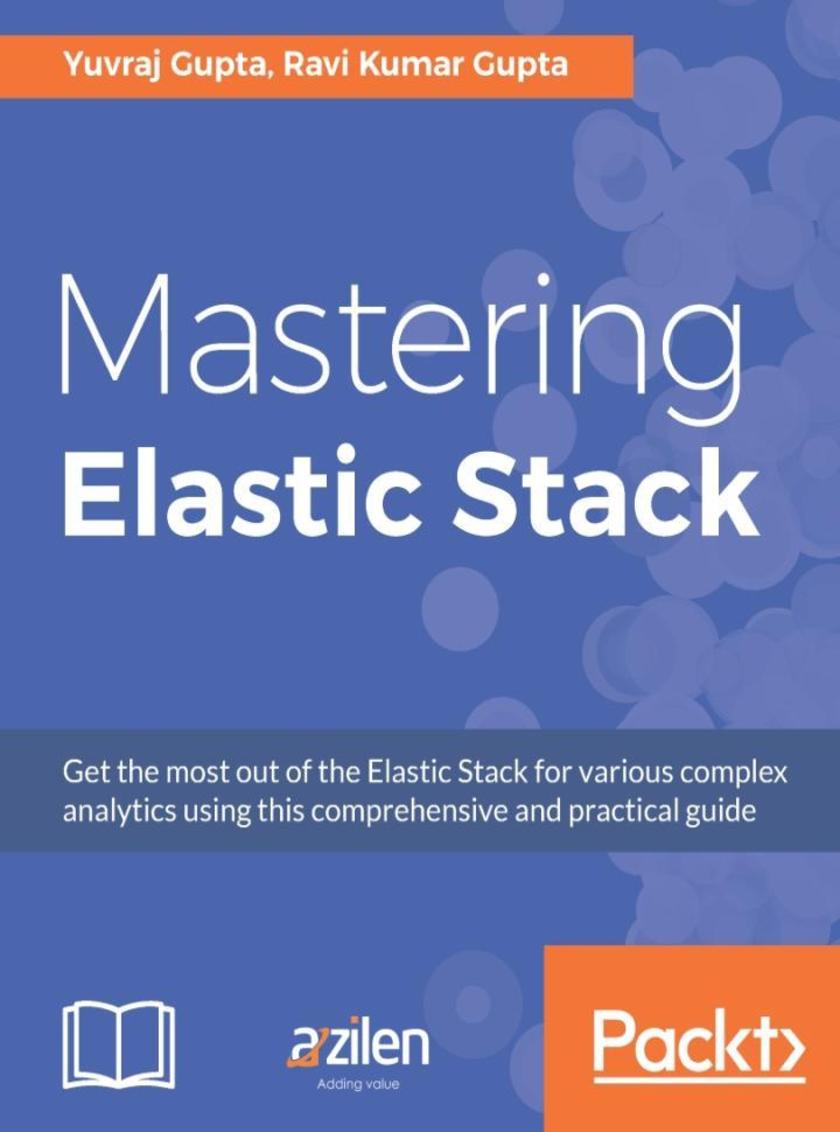
Mastering Elastic Stack
¥99.18
Get the most out of the Elastic Stack for various complex analytics using this comprehensive and practical guide About This Book Your one-stop solution to perform advanced analytics with Elasticsearch, Logstash, and Kibana Learn how to make better sense of your data by searching, analyzing, and logging data in a systematic way This highly practical guide takes you through an advanced implementation on the ELK stack in your enterprise environment Who This Book Is For This book cater to developers using the Elastic stack in their day-to-day work who are familiar with the basics of Elasticsearch, Logstash, and Kibana, and now want to become an expert at using the Elastic stack for data analytics. What You Will Learn Build a pipeline with help of Logstash and Beats to visualize Elasticsearch data in Kibana Use Beats to ship any type of data to the Elastic stack Understand Elasticsearch APIs, modules, and other advanced concepts Explore Logstash and it’s plugins Discover how to utilize the new Kibana UI for advanced analytics See how to work with the Elastic Stack using other advanced configurations Customize the Elastic Stack and plugin development for each of the component Work with the Elastic Stack in a production environment Explore the various components of X-Pack in detail. In Detail Even structured data is useless if it can’t help you to take strategic decisions and improve existing system. If you love to play with data, or your job requires you to process custom log formats, design a scalable analysis system, and manage logs to do real-time data analysis, this book is your one-stop solution. By combining the massively popular Elasticsearch, Logstash, Beats, and Kibana, elastic.co has advanced the end-to-end stack that delivers actionable insights in real time from almost any type of structured or unstructured data source. If your job requires you to process custom log formats, design a scalable analysis system, explore a variety of data, and manage logs, this book is your one-stop solution. You will learn how to create real-time dashboards and how to manage the life cycle of logs in detail through real-life scenarios. This book brushes up your basic knowledge on implementing the Elastic Stack and then dives deeper into complex and advanced implementations of the Elastic Stack. We’ll help you to solve data analytics challenges using the Elastic Stack and provide practical steps on centralized logging and real-time analytics with the Elastic Stack in production. You will get to grip with advanced techniques for log analysis and visualization. Newly announced features such as Beats and X-Pack are also covered in detail with examples. Toward the end, you will see how to use the Elastic stack for real-world case studies and we’ll show you some best practices and troubleshooting techniques for the Elastic Stack. Style and approach This practical guide shows you how to perform advanced analytics with the Elastic stack through real-world use cases. It includes common and some not so common scenarios to use the Elastic stack for data analysis.
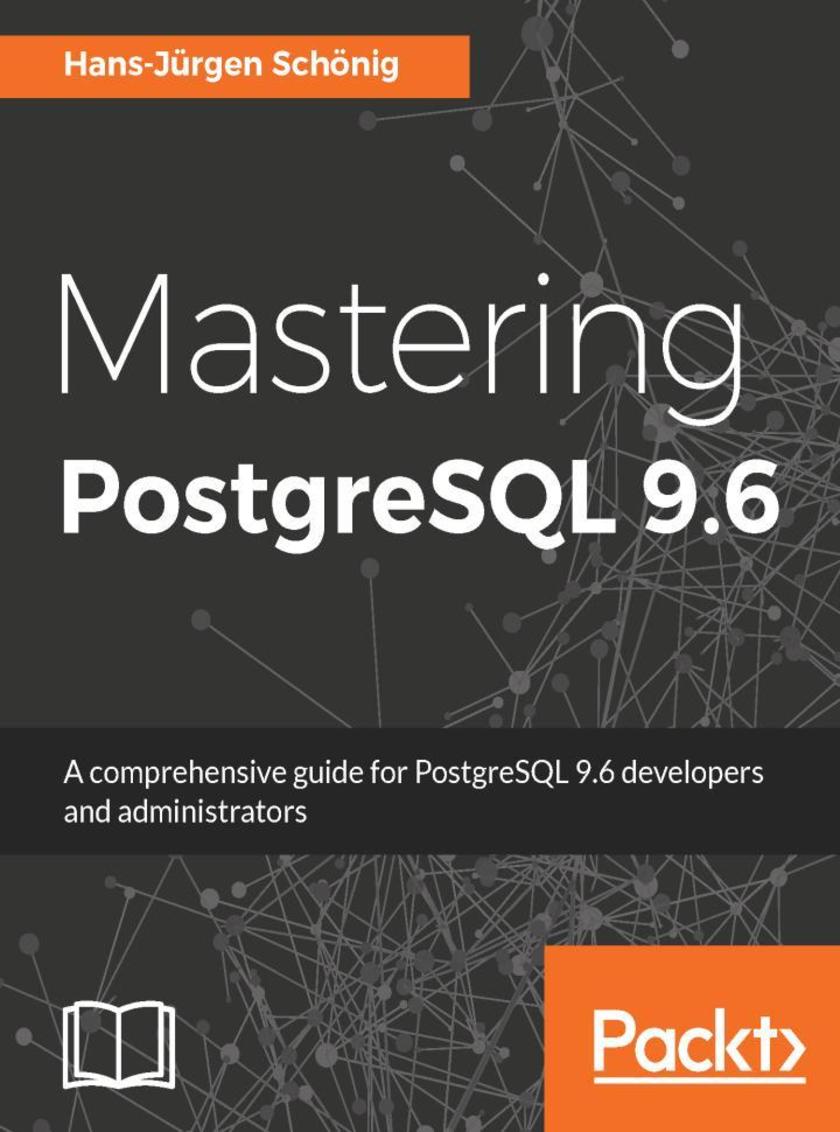
Mastering PostgreSQL 9.6
¥99.18
Master the capabilities of PostgreSQL 9.6 to efficiently manage and maintain your database About This Book ? Your one-stop guide to mastering the advanced concepts in PostgreSQL with ease ? Master query optimization, replication, and high availability with PostgreSQL ? Extend the functionalities of PostgreSQL to suit your organizational needs with minimum effort Who This Book Is For If you are a PostgreSQL data architect or an administrator who wants to understand how to implement advanced functionalities and master complex administrative tasks with PostgreSQL, then this book is perfect for you. Prior experience of administrating a PostgreSQL database and a working knowledge of SQL is required to make the best use of this book. What You Will Learn ? Get to grips with the advanced features of PostgreSQL 9.6 and handle advanced SQL ? Make use of the indexing features in PostgreSQL and fine-tune the performance of your queries ? Work with the stored procedures and manage backup and recovery ? Master the replication and failover techniques ? Troubleshoot your PostgreSQL instance for solutions to the common and not-so-common problems ? Learn how to migrate your database from MySQL and Oracle to PostgreSQL without any hassle In Detail PostgreSQL is an open source database used for handling large datasets (Big Data) and as a JSON document database. It also has applications in the software and web domains. This book will enable you to build better PostgreSQL applications and administer databases more efficiently. We begin by explaining the advanced database design concepts in PostgreSQL 9.6, along with indexing and query optimization. You will also see how to work with event triggers and perform concurrent transactions and table partitioning, along with exploring SQL and server tuning. We will walk you through implementing advanced administrative tasks such as server maintenance and monitoring, replication, recovery and high availability, and much more. You will understand the common and not-so-common troubleshooting problems and how you can overcome them. By the end of this book, you will have an expert-level command of the advanced database functionalities and will be able to implement advanced administrative tasks with PostgreSQL. Style and Approach This book is a comprehensive guide covering all the concepts you need to master PostgreSQL. Packed with hands-on examples, tips and tricks, even the most advanced concepts are explained in a very easy-to-follow manner. Every chapter in the book does not only focus on how each task is performed, but also why.
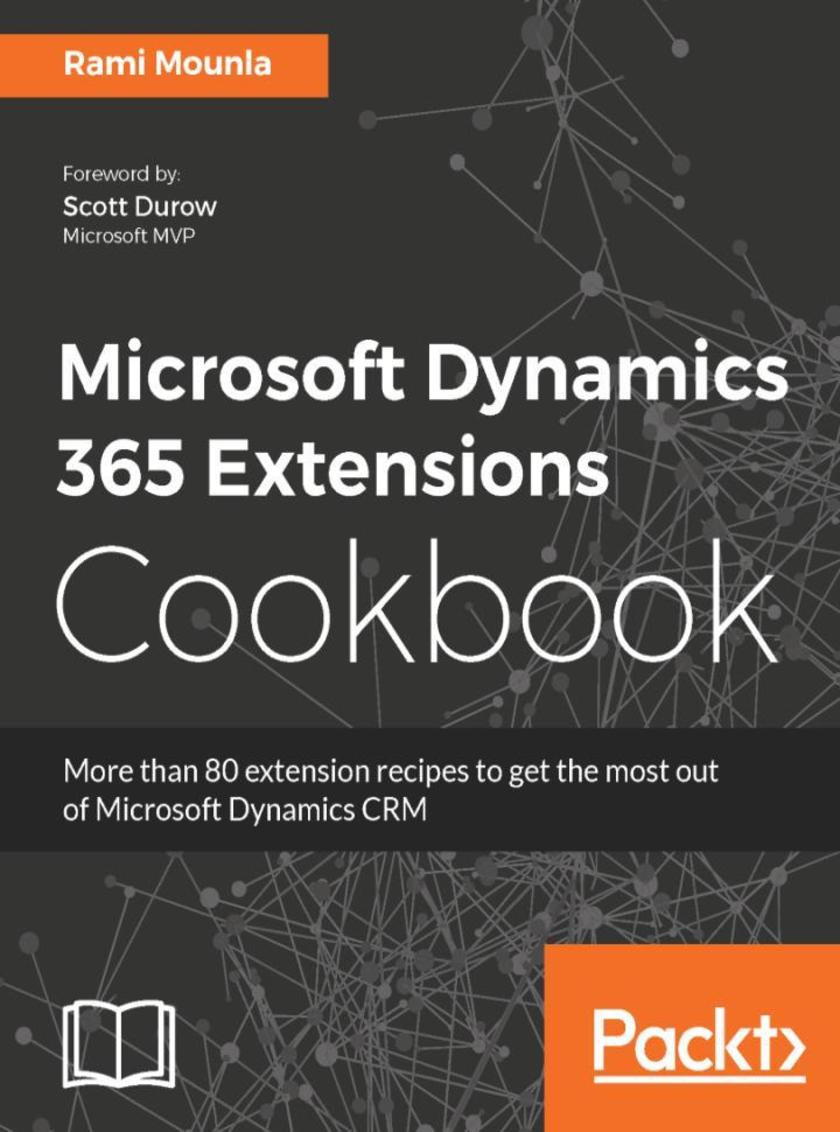
Microsoft Dynamics 365 Extensions Cookbook
¥99.18
More than 80 recipes to help you leverage the various extensibility features available for Microsoft Dynamics and solve problems easily About This Book ? Customize, configure, and extend the vanilla features of Dynamics 365 to deliver bespoke CRM solutions fit for any organization ? Implement business logic using point-and-click configuration, plugins, and client-side *s with MS Dynamics 365 ? Built a DevOps pipeline as well as Integrate Dynamics 365 with Azure and other platforms Who This Book Is For This book is for developers, administrators, consultants, and power users who want to learn about best practices when extending Dynamics 365 for enterprises. You are expected to have a basic understand of the Dynamics CRM/365 platform. What You Will Learn ? Customize, configure, and extend Microsoft Dynamics 365 ? Create business process automation ? Develop client-side extensions to add features to the Dynamics 365 user interface ? Set up a security model to securely manage data with Dynamics 365 ? Develop and deploy clean code plugins to implement a wide range of custom behaviors ? Use third-party applications, tools, and patterns to integrate Dynamics 365 with other platforms ? Integrate with Azure, Java, SSIS, PowerBI, and Octopus Deploy ? Build an end-to-end DevOps pipeline for Dynamics 365 In Detail Microsoft Dynamics 365 is a powerful tool. It has many unique features that empower organisations to bridge common business challenges and technology pitfalls that would usually hinder the adoption of a CRM solution. This book sets out to enable you to harness the power of Dynamics 365 and cater to your unique circumstances. We start this book with a no-code configuration chapter and explain the schema, fields, and forms modeling techniques. We then move on to server-side and client-side custom code extensions. Next, you will see how best to integrate Dynamics 365 in a DevOps pipeline to package and deploy your extensions to the various SDLC environments. This book also covers modern libraries and integration patterns that can be used with Dynamics 365 (Angular, 3 tiers, and many others). Finally, we end by highlighting some of the powerful extensions available. Throughout we explain a range of design patterns and techniques that can be used to enhance your code quality; the aim is that you will learn to write enterprise-scale quality code. Style and approach This book takes a recipe-based approach, delivering practical examples and use cases so that you can identify the best possible approach to extend your Dynamics 365 deployment and tackle your specific business problems.
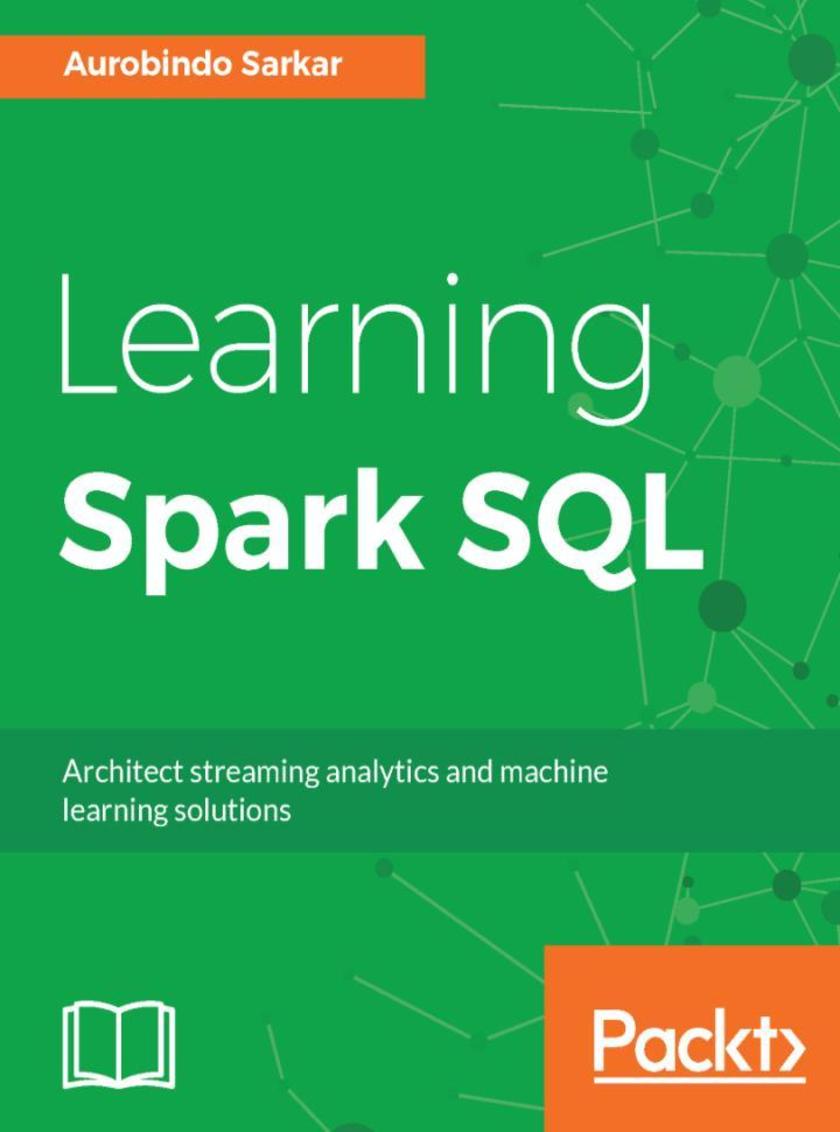
Learning Spark SQL
¥99.18
Design, implement, and deliver successful streaming applications, machine learning pipelines and graph applications using Spark SQL API About This Book ? Learn about the design and implementation of streaming applications, machine learning pipelines, deep learning, and large-scale graph processing applications using Spark SQL APIs and Scala. ? Learn data exploration, data munging, and how to process structured and semi-structured data using real-world datasets and gain hands-on exposure to the issues and challenges of working with noisy and "dirty" real-world data. ? Understand design considerations for scalability and performance in web-scale Spark application architectures. Who This Book Is For If you are a developer, engineer, or an architect and want to learn how to use Apache Spark in a web-scale project, then this is the book for you. It is assumed that you have prior knowledge of SQL querying. A basic programming knowledge with Scala, Java, R, or Python is all you need to get started with this book. What You Will Learn ? Familiarize yourself with Spark SQL programming, including working with DataFrame/Dataset API and SQL ? Perform a series of hands-on exercises with different types of data sources, including CSV, JSON, Avro, MySQL, and MongoDB ? Perform data quality checks, data visualization, and basic statistical analysis tasks ? Perform data munging tasks on publically available datasets ? Learn how to use Spark SQL and Apache Kafka to build streaming applications ? Learn key performance-tuning tips and tricks in Spark SQL applications ? Learn key architectural components and patterns in large-scale Spark SQL applications In Detail In the past year, Apache Spark has been increasingly adopted for the development of distributed applications. Spark SQL APIs provide an optimized interface that helps developers build such applications quickly and easily. However, designing web-scale production applications using Spark SQL APIs can be a complex task. Hence, understanding the design and implementation best practices before you start your project will help you avoid these problems. This book gives an insight into the engineering practices used to design and build real-world, Spark-based applications. The book's hands-on examples will give you the required confidence to work on any future projects you encounter in Spark SQL. It starts by familiarizing you with data exploration and data munging tasks using Spark SQL and Scala. Extensive code examples will help you understand the methods used to implement typical use-cases for various types of applications. You will get a walkthrough of the key concepts and terms that are common to streaming, machine learning, and graph applications. You will also learn key performance-tuning details including Cost Based Optimization (Spark 2.2) in Spark SQL applications. Finally, you will move on to learning how such systems are architected and deployed for a successful delivery of your project. Style and approach This book is a hands-on guide to designing, building, and deploying Spark SQL-centric production applications at scale.
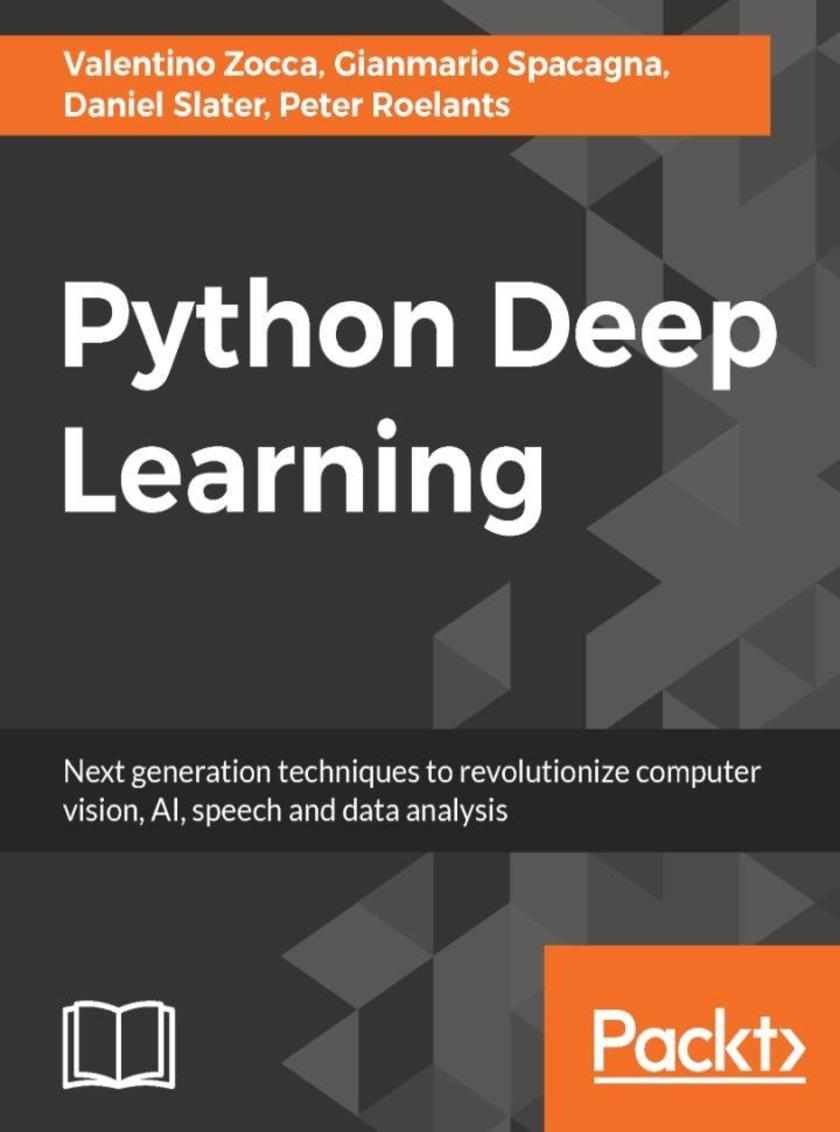
Python Deep Learning
¥99.18
"Take your machine learning skills to the next level by mastering Deep Learning concepts and algorithms using Python. About This Book ?Explore and create intelligent systems using cutting-edge deep learning techniques ?Implement deep learning algorithms and work with revolutionary libraries in Python ?Get real-world examples and easy-to-follow tutorials on Theano, TensorFlow, H2O and more Who This Book Is For This book is for Data Science practitioners as well as aspirants who have a basic foundational understanding of Machine Learning concepts and some programming experience with Python. A mathematical background with a conceptual understanding of calculus and statistics is also desired. What You Will Learn ?Get a practical deep dive into deep learning algorithms ?Explore deep learning further with Theano, Caffe, Keras, and TensorFlow ?Learn about two of the most powerful techniques at the core of many practical deep learning implementations: Auto-Encoders and Restricted Boltzmann Machines ?Dive into Deep Belief Nets and Deep Neural Networks ?Discover more deep learning algorithms with Dropout and Convolutional Neural Networks ?Get to know device strategies so you can use deep learning algorithms and libraries in the real world In Detail With an increasing interest in AI around the world, deep learning has attracted a great deal of public attention. Every day, deep learning algorithms are used broadly across different industries. The book will give you all the practical information available on the subject, including the best practices, using real-world use cases. You will learn to recognize and extract information to increase predictive accuracy and optimize results. Starting with a quick recap of important machine learning concepts, the book will delve straight into deep learning principles using Sci-kit learn. Moving ahead, you will learn to use the latest open source libraries such as Theano, Keras, Google's TensorFlow, and H20. Use this guide to uncover the difficulties of pattern recognition, scaling data with greater accuracy and discussing deep learning algorithms and techniques. Whether you want to dive deeper into Deep Learning, or want to investigate how to get more out of this powerful technology, you'll find everything inside. Style and approach Python Machine Learning by example follows practical hands on approach. It walks you through the key elements of Python and its powerful machine learning libraries with the help of real world projects. "




 购物车
购物车 个人中心
个人中心



